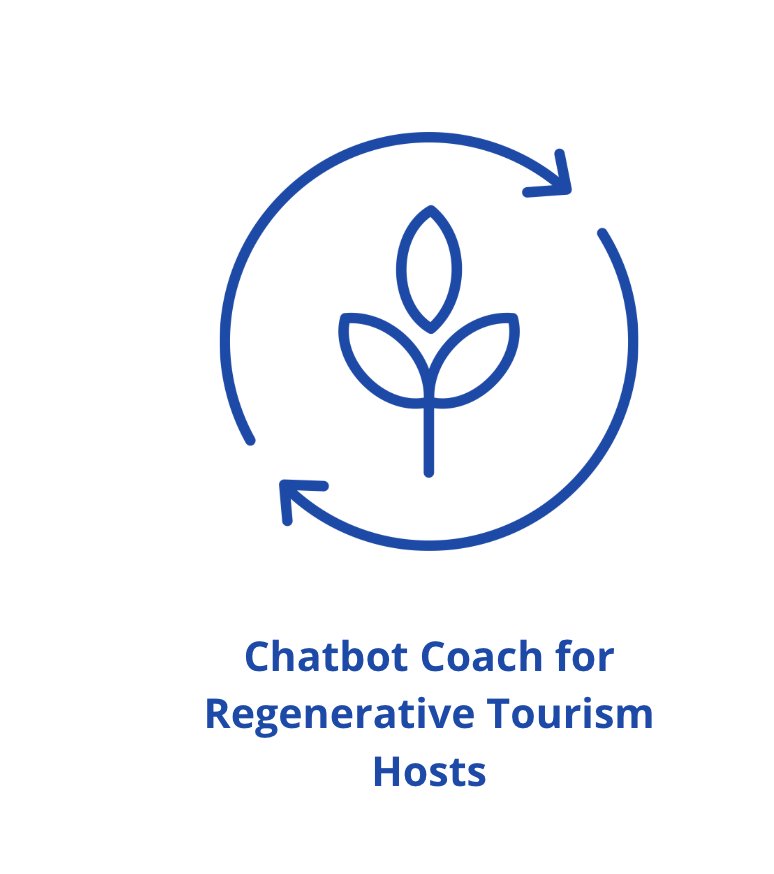Welcome!
We are thrilled that you’ll be starting your journey as a Regenerative Tourism operator with us.
Regenerative Tourism is a community-rooted approach that supports local resilience—social, ecological, and economic—while welcoming travelers to engage respectfully and contribute meaningfully. It uplifts the visions and leadership already present in the places being visited.
At ILE Strategies we are gathering insight on this emerging field and have developed a chatbot to help jump start visioning and planning for hosts and destination mangers.
Our chatbot coach is a simple GenAI- supported tool trained in strategic planning in the context of regenerative tourism, as well as relevant topics such as climate change resilience, mitigation and adaptation, ecosystems services, local economic development, and affordable housing.
See FAQ’s about Regenerative Tourism below. This information is evolving as we learn more.
Disclaimer: The output generated is for educational purposes only. AI is imperfect and is subject to biases and inaccuracies. Be sure to seek legal, financial and other expert advise before implementing any suggestions generated by our AI tools.
Why is ILE Strategies Building AI Tools for Regenerative Tourism
At ILE Strategies, we are a diverse team from the Afro-diaspora—with deep roots in the Caribbean and Africa.
Regeneration, land justice, and community self-determination are not just professional goals for us—they are personal. We have ancestral land under threat, family stories of migration and resilience, and a desire to reconnect with land and place in meaningful, non-extractive ways.
We’re inspired by visionaries like Francis Kéré, whose work demonstrates that architecture—and by extension, any design for people and place—can be a tool for cultural continuity, climate resilience, and collective pride. Like Kéré, we believe regenerative design must begin with those who already belong to the land.
This work is close to home—literally and spiritually.
More About Regenerative Tourism: Frequently Asked Questions We Anticipate—and Welcome
What makes this different from traditional tourism or eco-tourism?
Regenerative tourism doesn’t just aim to minimize harm—it seeks to actively support the restoration of ecosystems, cultures, and economies. Unlike conventional tourism models that focus on the visitor’s experience, regenerative tourism centers the **needs, rhythms, and leadership of the local community.** Visitors are invited to participate respectfully, not consume passively.
Who defines what’s “regenerative” or what the community needs?
We believe regeneration must be **place-based and community-led.** We don’t impose a one-size-fits-all development plan. Instead, we support existing local visions, adapt to cultural context, and collaborate with residents who are already doing the work of caretaking land, heritage, and livelihoods.
Is this just another form of “volun-tourism” or feel-good travel?
No. Regenerative tourism isn’t about saving anyone—it’s about mutual learning, respect, and co-creation. Visitors are invited to slow down, listen, and build long-term relationships with people and places. This approach takes humility, not heroism.
What if tourism has already caused harm in this area?
We understand that tourism has a painful history in many places, including environmental damage, economic inequity, and cultural erasure. Regenerative tourism acknowledges this reality—and works actively to reverse those patterns. That might mean:
Prioritizing local ownership
Limiting visitors to lessen strain on local communities and ecosystems
Addressing waste and water management
Supporting intergenerational knowledge transmission
How do you ensure that benefits stay in the community?
Our framework for our consultancy and AI tools emphasizes:
Fair partnerships
Community profit-sharing or reinvestment
Transparency in decision-making
Preference for local suppliers, builders, and guides
Tools that support community-led planning (including digital tools when relevant)
We do not have all the answers. Our work is rooted in supporting local leadership and co-creating conditions where resilience can take root and thrive.
